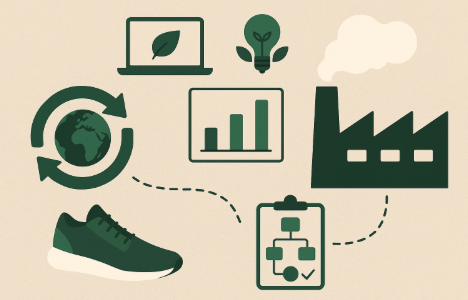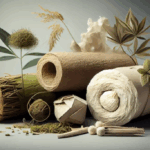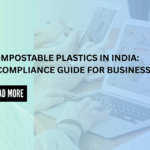
Understanding the 5 Stages of Life Cycle Assessment (LCA)
When we think of sustainability, most of us picture “Use recycled paper” or “Cut down carbon emissions.” But it’s just a trailer to the picture.
So what’s a true sustainable product? It is one whose entire environmental story has been told — from the moment raw materials are taken from nature, right up to the point it is recycled, reused, or discarded.
Relying only on high-level, surface data to judge sustainability can be misleading. In fact, we would need a tool that would enable us to break down each stage of the product’s life cycle, followed by an in-depth analysis.
For example — switching from plastic to paper packaging feels eco-friendly. But what if the paper required 4x more water to produce?
That’s exactly where Life Cycle Assessment or LCA comes in.
Did you know?
Up to 80% of a product’s environmental impact is influenced by decisions made during the design phase (e.g., materials, longevity, recyclability).
What Is Life Cycle Assessment?
Life Cycle Assessment (LCA) is a powerful tool that analyzes the environmental impact of a product or process throughout its entire life—from raw material extraction to disposal (end-of-life).
Businesses across the world use LCA to:
- Find hidden environmental “hotspots” in their supply chain
- Compare product alternatives
- Back up sustainability claims with verified data
- Identify where to reduce emissions, water, waste, or energy use
Did you know?
In India, some FMCG brands have reduced their packaging carbon footprint by 15–20% simply by switching suppliers after an LCA.
To do LCA effectively, the process is broken down into five distinct stages. Here’s what each one involves:
The 5 Stages of Life Cycle Assessment
- Goal and Scope Definition
Every LCA starts with a clear purpose. In this stage, you determine:
- The objective of the assessment (e.g., reduce emissions, compare materials)
- The product or system being analyzed
- System boundaries (e.g., cradle-to-gate vs. cradle-to-grave)
- The functional unit (e.g., 1 pair of shoes, 1 kg of packaging)
These definitions guide how detailed the analysis needs to be and ensure that results are relevant to your goals.
- Life Cycle Inventory (LCI)
The inventory phase involves gathering all the data about inputs and outputs across the product’s life cycle. That includes:
- Materials and energy consumed
- Water usage
- Emissions to air, land, and water
- Waste generation
This stage is often the most data-heavy and may involve supplier collaboration or using LCA databases. It lays the groundwork for a comprehensive environmental analysis.
- Life Cycle Impact Assessment (LCIA)
Next, the raw data is translated into environmental impact categories, such as:
- Climate change potential (carbon footprint)
- Water scarcity
- Resource depletion
This is where you move from “what goes in and out” to understanding what it means for the planet.
- Interpretation
Here, you analyze the results to find insights and opportunities. That might include:
- Identifying major contributors to environmental harm
- Comparing different materials or design choices
- Highlighting gaps or uncertainties in your data
- Recommending actionable improvements
This stage helps you turn data into strategy, making sustainability decisions more objective and data-driven.
- Reporting and Review
The final stage is about documenting and sharing your findings. A well-structured report might be used internally for strategy or externally to support product transparency. If the LCA is published or used for certification, a third-party review ensures credibility and consistency with international standards.
Why the LCA Framework Matters?
With sustainability gaining traction among Indian consumers (trending with Gen Z & millennials), LCA helps businesses:
- Make data backed material and design choices
- Increase supply chain transparency
- Align sustainability with business goals
- Communicate environmental impact with confidence – credibility instead of greenwashing
Rather than guessing which decision is more eco-friendly, you’re backed by a full-system analysis rooted in real data.
Did you know?
Nielsen’s research shows 77% of Indian consumers are willing to pay more for sustainable products.
Making Life Cycle Assessment (LCA) More Accessible
We have designed Untrash so you don’t need to be a sustainability expert to conduct a meaningful LCA. With our platform, you can:
- Run assessments easily, with user-friendly interfaces
- Get clear visual breakdowns of your product’s impact
- Receive tailored recommendations for eco product development
- Turn complex assessments into customer-friendly reports
By understanding each stage, you’re better equipped to create products that align with both business goals and environmental responsibility.
Whether you’re launching a new product or improving an existing one, LCA as a smart sustainability tool is the difference between guessing and knowing your impact.
Ready to start making more sustainable product decisions?
Let Untrash help you measure what matters and take action that lasts!
Read about our Life Cycle Assessment Product.


